Portrait of Arthur Rose Vincent (1876-1956), husband of Maud Bowers Bourn (below).
Artist: Signed and dated John L. Sargent, 1915
Charcoal drawing. This is a photographic reproduction of the original.
Framed: c: 49 x 43 cm

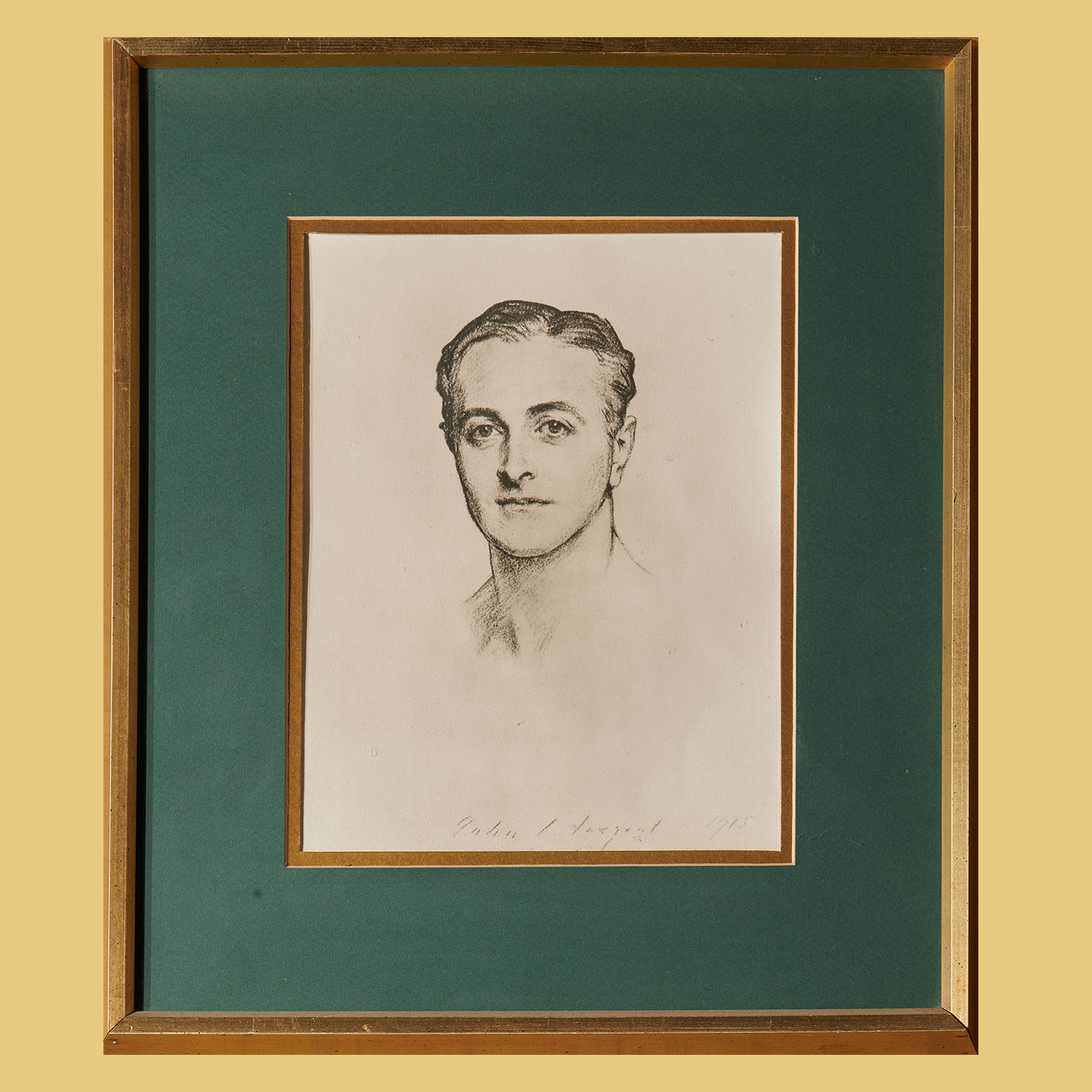
Portrait of Arthur Rose Vincent (1876-1956), husband of Maud Bowers Bourn (below).
Artist: Signed and dated John L. Sargent, 1915
Charcoal drawing. This is a photographic reproduction of the original.
Framed: c: 49 x 43 cm

Artist: Said to be a copy by Gwen Herbert of Cahernane, of an original painting. The latter may have been hanging in Muckross House in 1865.
Oil on Canvas.
c. 79 x 63.5 cm
Framed: c. 141 x 95 cm
The painted inscription in the artwork reads as follows:
‘Catherine Countesse of Desmond as she appeared at ye Court of our Sovraige Lord King James in this present A.D. 1614 and in ye 140th yeare of her Age. Thither she came from Bristol to seek relief House of Desmonde having been ruined by Attainder. She was married in ye Reigne of King Edward IV and in ye Course of her long pilgrimage renewed her teeth twice. Her principal residence is at Inchiquin in Munster whither she undauntedly proposeth (her purpose accomplished) incontinen there to return.’

Artist: William A. Nesfield (1793-1881).
Gouache on paper
c. 68 x 96 cm
Framed: c. 101 x 127 cm
Stag Hunting upon Killarney’s Lakes was an established past time among the local ascendancy at least as early as 1725. For, in August of that year, Valentine Browne 3rd Viscount Kenmare (c. 1694-1736) instructed O Sullevane More (sic) to meet him ‘with a boat at Ross to go stag hunting.’ The sport involved the hunting of a stag by a pack of hounds until it was driven down into the water. The animal was then captured by throwing a rope around it antlers. The ear of the stag was sometimes nicked to indicate that the animal had been captured and it was then often released. https://www.muckrosshouseresearchlibrary.ie/pdf/newsletters/newsletter23.pdf
The chimney-surround is of Welsh marble, decorated with a central cartouche and ornamental scroll work. The fire inset is of iron with brass decoration.
The chimney-surround is surmounted by one of a pair of large over-mantle gilt mirrors. The second mirror is located in the Library.
There is a bell-pull, to summon a servant, located on either side of the fireplace.

Introduced to Muckross House by the Bourn Vincent family, probably c. 1911.
c. 187.96 x 88.9 cm

The bronze statue is attached to a marble stand.
Mercury was believed to be the messenger of the Roman Gods and was also associated with commerce.

The interior of this teapoy, or tea caddy, originally contained three glass, or porcelain bowls, for the mixing and blending of loose-leaved tea. It is supported by a central stem on tripod feet.
Teapoys evolved during the latter part of the 18th century. At that time tea was still a luxury item, enjoyed only by the most affluent in society. Until well into the 19th century teapoys were normally fitted with a lock and the key was usually in the possession of the lady of the house. It was she too who was normally responsible for blending the loose tea leaves.

This high quality cabinet is made from ebonised timber, mainly pear with a central panel in ebony.
The upper portion of the two door panels are decorated with scenes of Ross Castle and Muckross Abbey. The lower portions are decorated with sprays of Killarney Fern. The plinth is decorated with shamrocks, as are the internal drawers. The figure of a deer sits atop the cabinet.

This Killarney inlaid games table probably dates to the late 19th century. The substrate is of pine, veneered with arbutus and yew.
The table opens out to reveal inlaid surfaces for the playing of chess, backgammon and cribbage, bordered by trailing shamrocks and oak leaves. The decoration also includes depictions of a number of well-known tourist attractions, such as Muckross Abbey and Glena cottage (destroyed 1920).
The table is supported by a bulbous column and base, decorated with trailing shamrock and claw feet.
Killarney Inlaid Furniture: A Brief History.
During the 1820s bog oak and bog yew, found in bogs close to Killarney town, began to be used to produce wooden goods for tourists. By the late 1830s the wood of the native arbutus (Arbutus unedo) was also being exploited to produce inlaid items. This industry was well established by the late 1840s.
Items of furniture produced by this inlaid arbutus industry included: cabinets, chiffoniers, davenports and games’ tables. Smaller items were also produced. The inlaid motifs included representations of local tourist sites including: Muckross House, Muckross Abbey, Killarney House, Glena Cottage, Ross Castle, Innisfallen, etc. Representations of the eagle, deer and Irish harp were also used, while decorative borders included shamrocks, ferns, oak leaves and acorns, holly leaves, etc.
This Killarney industry was in decline by the 1880s. However, between 1929 and 1952 the production of inlaid arbutus furniture continued in the Gap of Dunloe.

This circular Killarney inlaid, tilt-top, tripod table probably dates to the mid to late 19th century. It is decorated with a central roundel containing an image of Muckross Abbey. The roundel is enclosed, in turn, by trailing shamrocks.
Along the outer edge, a band of additional roundels depict well known tourist sites including Glena Cottage, the Old Weir Bridge and Innisfallen. The table has a pie crust edging and paw feet.
Killarney Furniture: A Brief History.
During the 1820s bog oak and bog yew, found in bogs close to Killarney town, began to be used to produce wooden goods for tourists. By the late 1830s the wood of the native arbutus (Arbutus unedo) was also being exploited to produce inlaid items. This industry was well established by the late 1840s.
Items of furniture produced by this inlaid arbutus industry included: cabinets, chiffoniers, davenports and games’ tables. Smaller items were also produced. The inlaid motifs included representations of local tourist sites including: Muckross House, Muckross Abbey, Killarney House, Glena Cottage, Ross Castle, Innisfallen, etc. Representations of the eagle, deer and Irish harp were also used, while decorative borders included shamrocks, ferns, oak leaves and acorns, holly leaves, etc.
This Killarney industry was in decline by the 1880s. However, between 1929 and 1952 the production of inlaid arbutus furniture continued in the Gap of Dunloe.

To either side of the fireplace stands a wooden pole screen of Asian, probably Chinese, origin. The high quality decoration on these two objects was made using gold powder and a black resin known as urushi.
Pole screens were used to deflect the heat from the faces of those sitting closest to the fire. The screens could be raised and lowered to suit the height of each individual.
Pole screens began to grow in popularity from the mid-18th century. At that time both men and women wore heavy wax make-up to disguise skin imperfections. However, these particular examples probably date to the late 19th or early 20th century.

This Grand Piano of eight octaves is in excellent condition and is one of the original Muckross House furnishings. It is a very high status object and was made by Broadwood, one of Queen Victoria’s preferred piano manufacturers.
The piano is of Brazilian rosewood, with gadroon edging, carved tapered legs with foliate capitals and acanthus-leaf carvings. It has a lute-shaped pedal platform and Cole and Colinson castors.
The piano was completed at Horseferry Workshops, Westminister, London, on 9th April 1845. The manufacturing record describes it as a ‘patent repetition grand pianoforte, compass c to g.’ The Serial Number on the piano is 16,321.
On 8th July 1845 the piano was delivered to Farlow’s Wharfe, London. It was addressed to ‘Lady Eleanor Balfour, care of Henry Arthur Herbert Esq of Muckross Abbey, Killarney, care of William Bourke Esq, Patrick St., Cork.’ Eleanor Balfour was Herbert’s mother-in-law. The piano was loaded on the steamship ‘Ocean’, destined for Ireland. The shipping cost was 8s/6d and the travel insurance was also 8s/6d.

Introduced to Muckross House by the Bourn Vincent family, probably c. 1911.
c.109.22 x 74.93 cm”
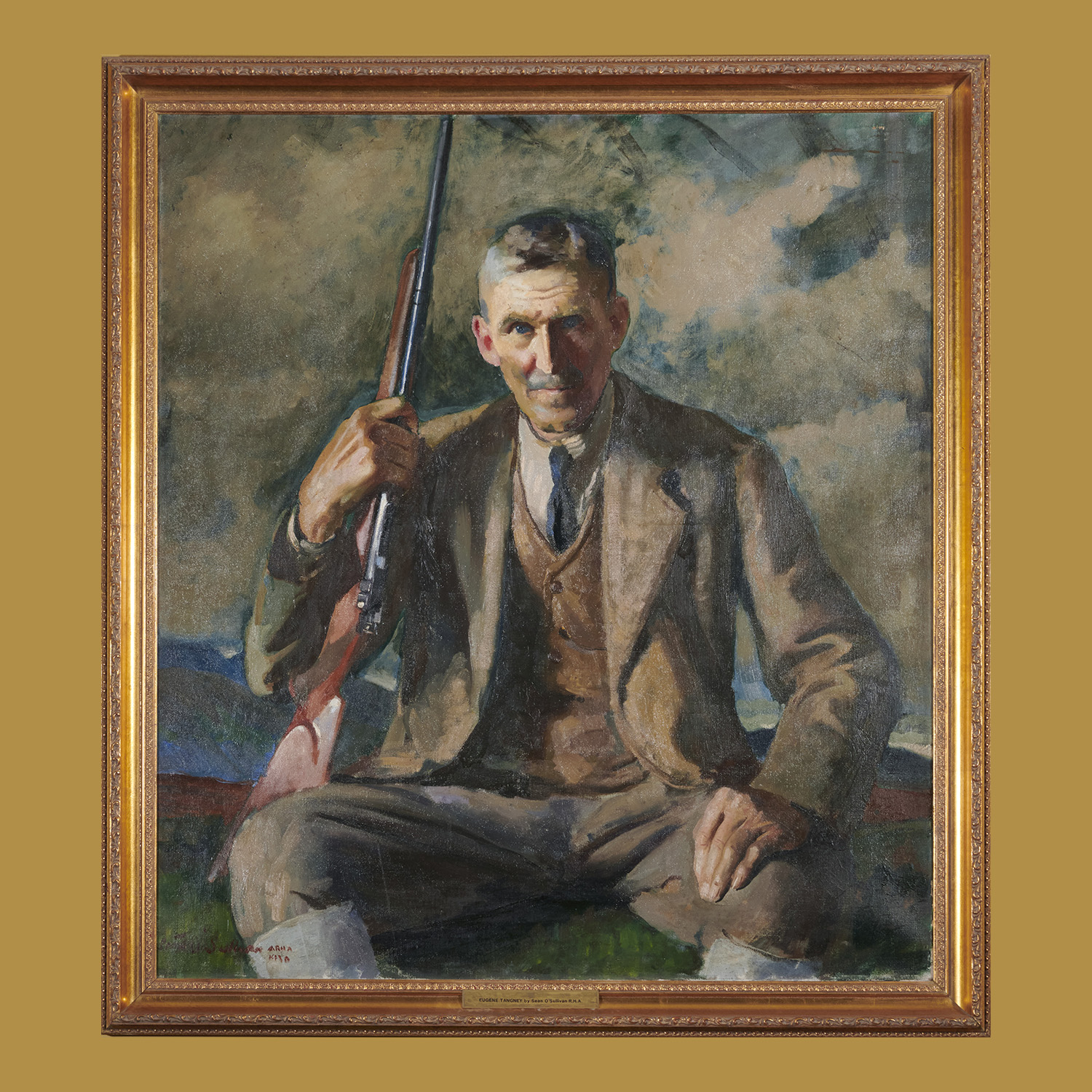
Eugene Tangney served as Head Gamekeeper on the Muckross Estate for both the Herbert and Bourn Vincent families. Aside from protecting the game from poachers, he arranged various aspects of field sport on the estate. This portrait is believed to depict Eugene Tangney c. 1940.
Artist: Seán O’Sullivan RHA. Born in Dublin in 1906. O’Sullivan was a respected Irish portrait painter. He died in 1964.
Oil on Canvas
c. 101 x 91 cm
Framed: c. 115 x 104.5 cm
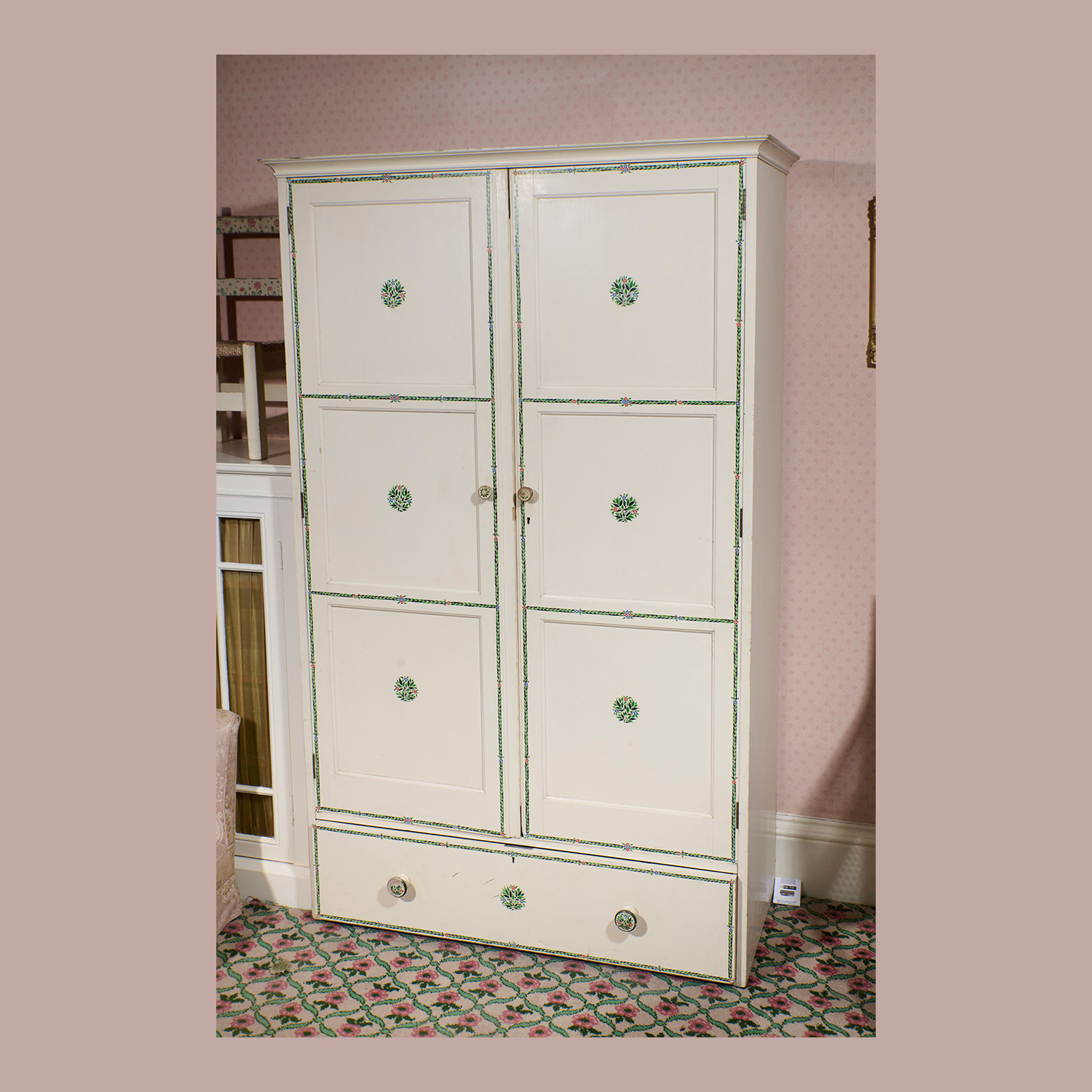
The wardrobe is one of a number of pieces of furniture in this room that form part of a matching set. The other pieces include the chest of drawers, wash-stand, towel rail and the larger of the two children’s beds. All are white in colour, with a hand-painted floral and leaf pattern.
Probably early 20th century.
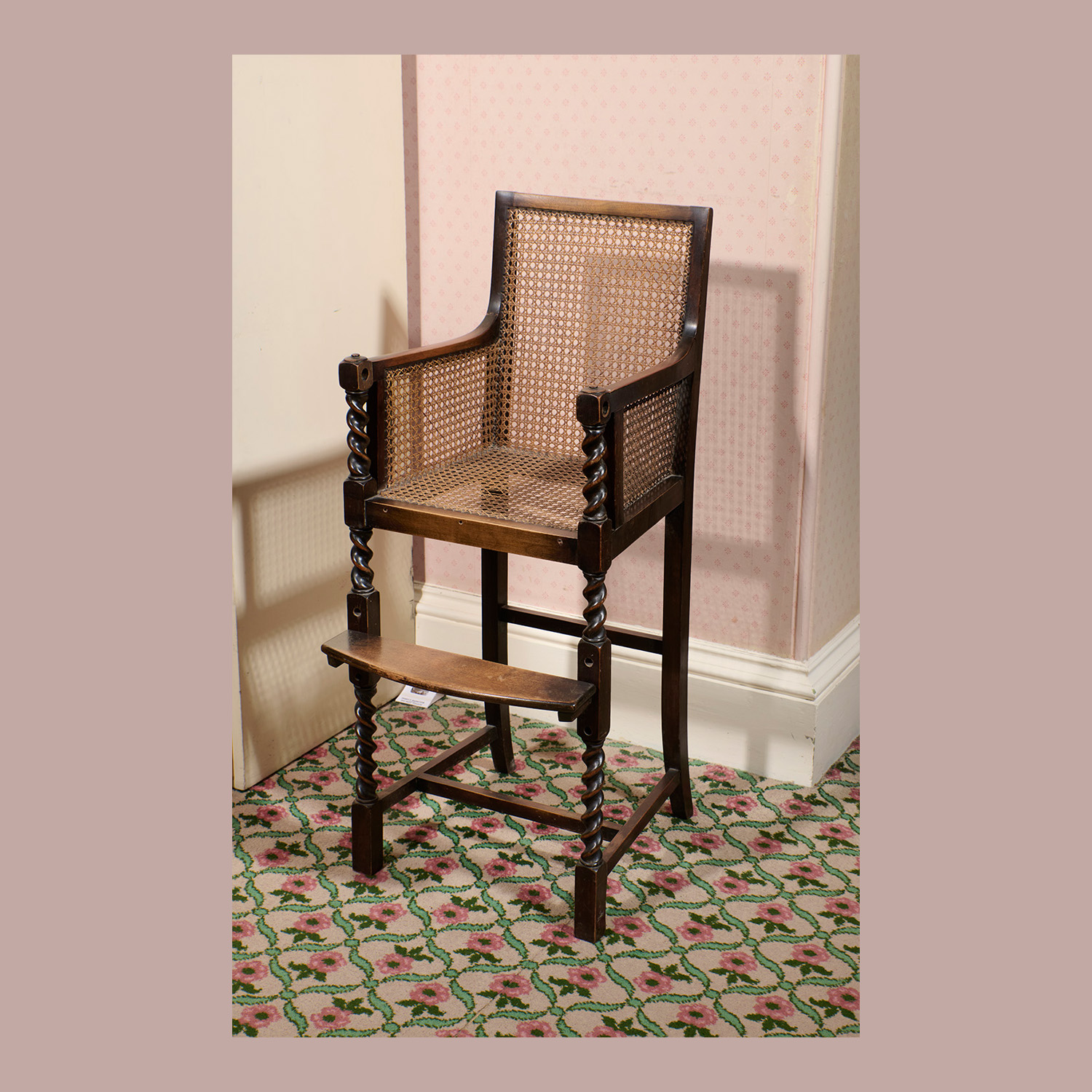
Birch-wood high chair, with barley sugar twisted front supports. The seat, back and sides of cane.
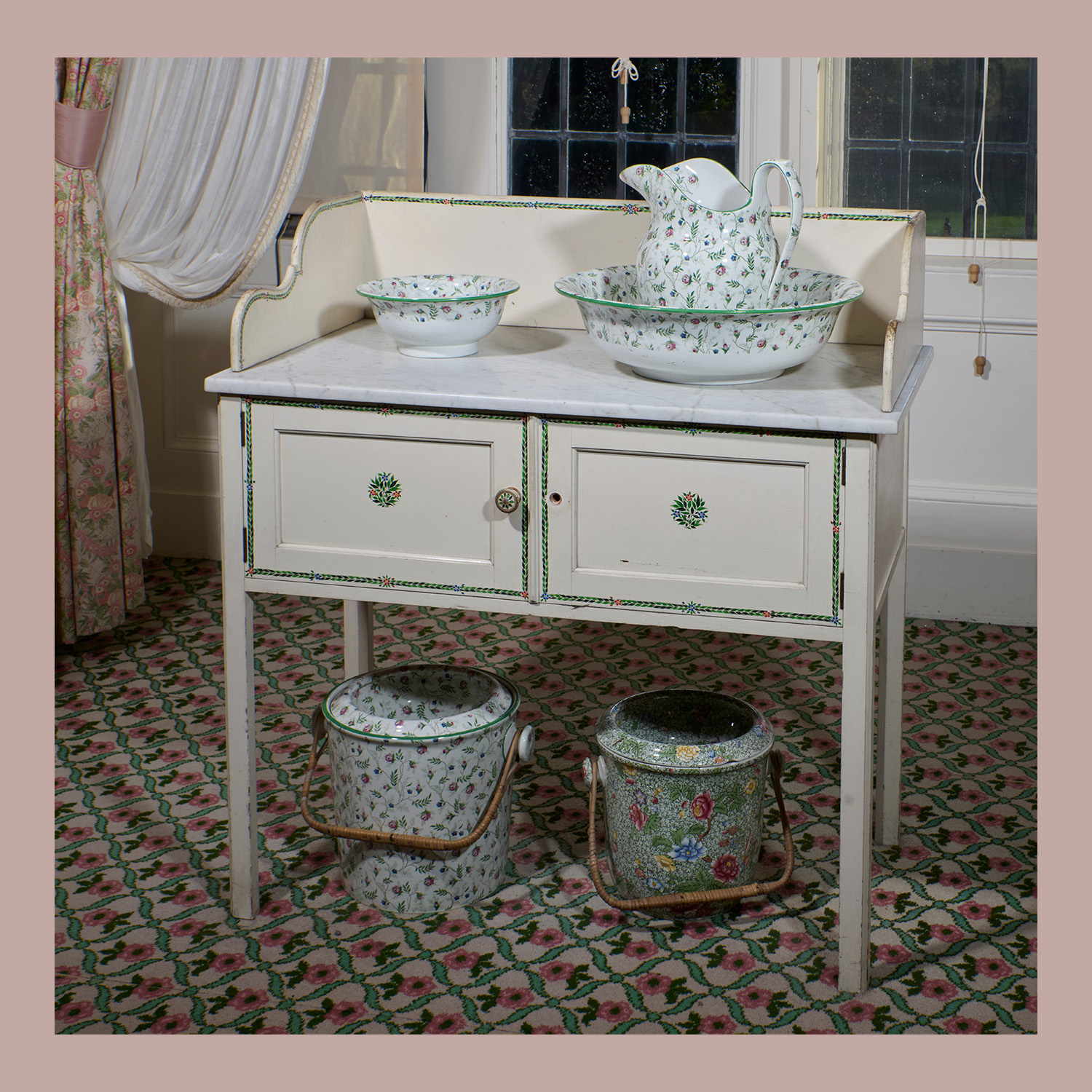
The wash stand is one of a number of pieces of furniture in this room that form part of a matching set. The other pieces include the wardrobe, chest of drawers, towel rail and the larger of the two children’s beds. All are white in colour, with a hand-painted floral and leaf pattern.
Probably early 20th century.
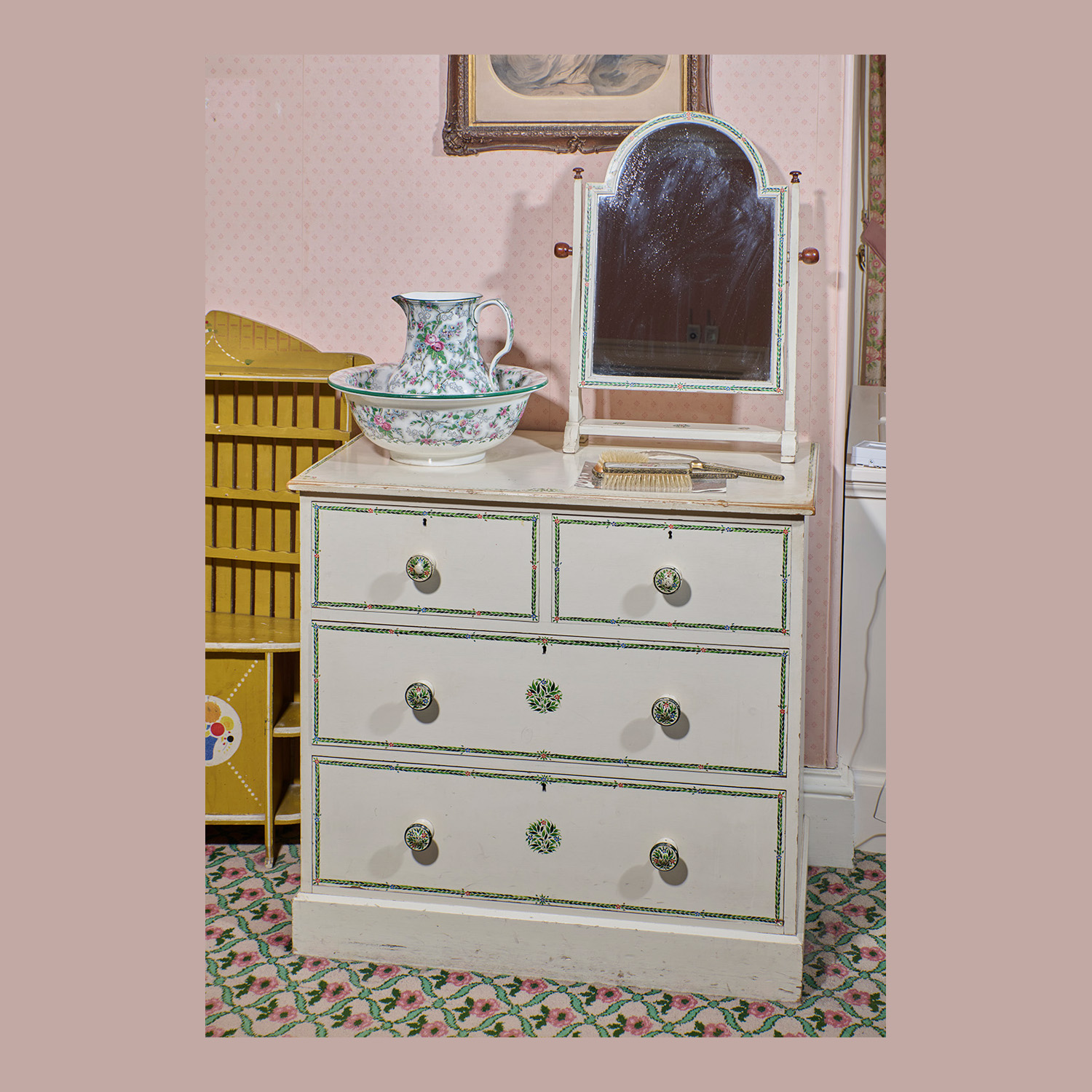
This pine chest of drawers, with matching mirror, is one of a number of pieces of furniture in this room that form part of a matching set. The other pieces include the wardrobe, wash-stand, towel rail and the larger of the two children’s beds. All are are white in colour, with a hand-painted floral and leaf pattern.
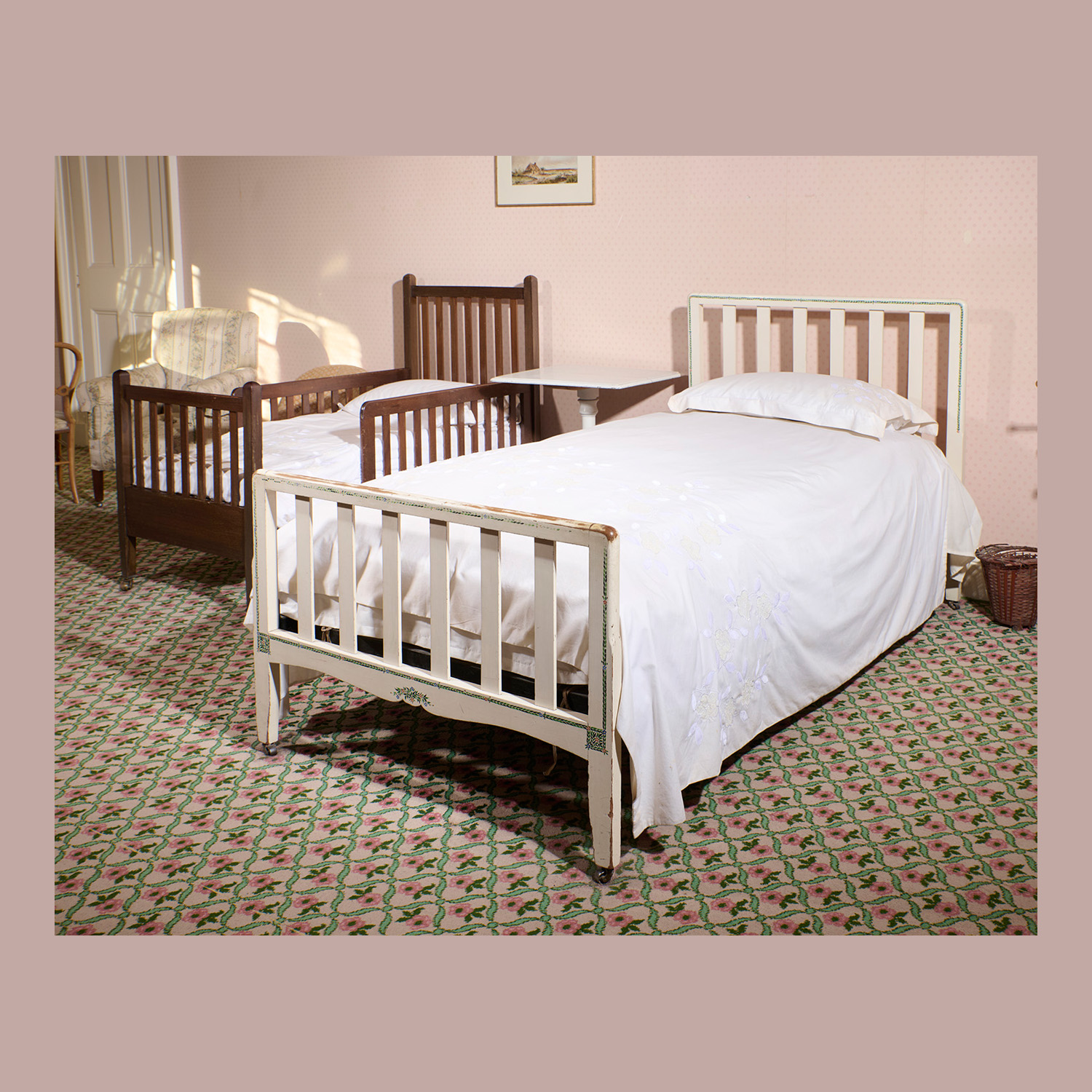
This bed is one of a number of pieces of furniture in the room that forms part of a matching set. The other pieces include the wardrobe, chest of drawers and wash stand. All four pieces are white in colour, with a hand-painted pattern.
The room currently displays pieces of furniture once used by the Vincent children, Elizabeth Rose (Rosie, 1915-1983) and William (Billy, 1919-2012). However, this was formerly the bedroom of their mother Maud Bourn Vincent (d. 1929).
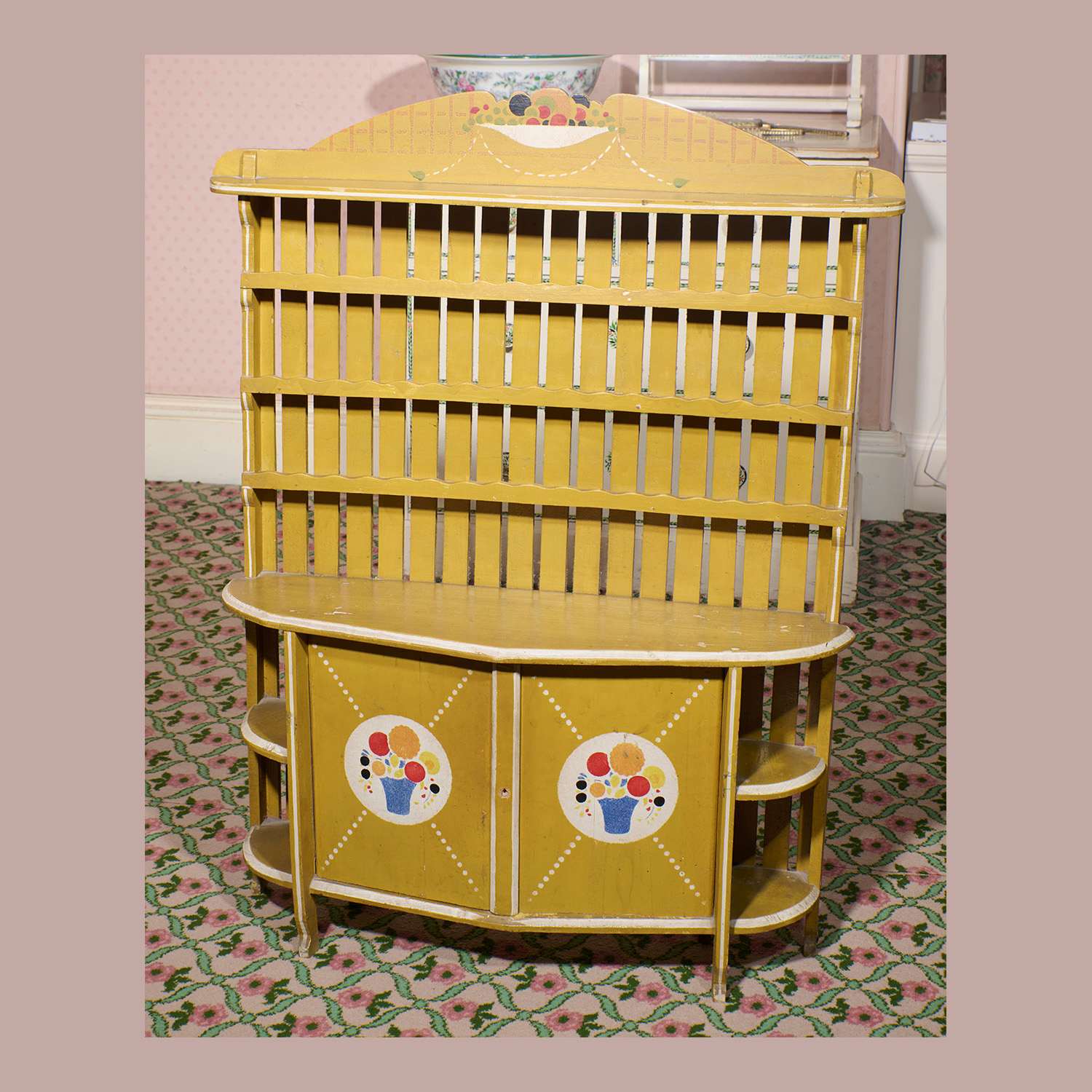
This pine toy dresser has applied, hand-painted, decoration. Probably early 20th century.
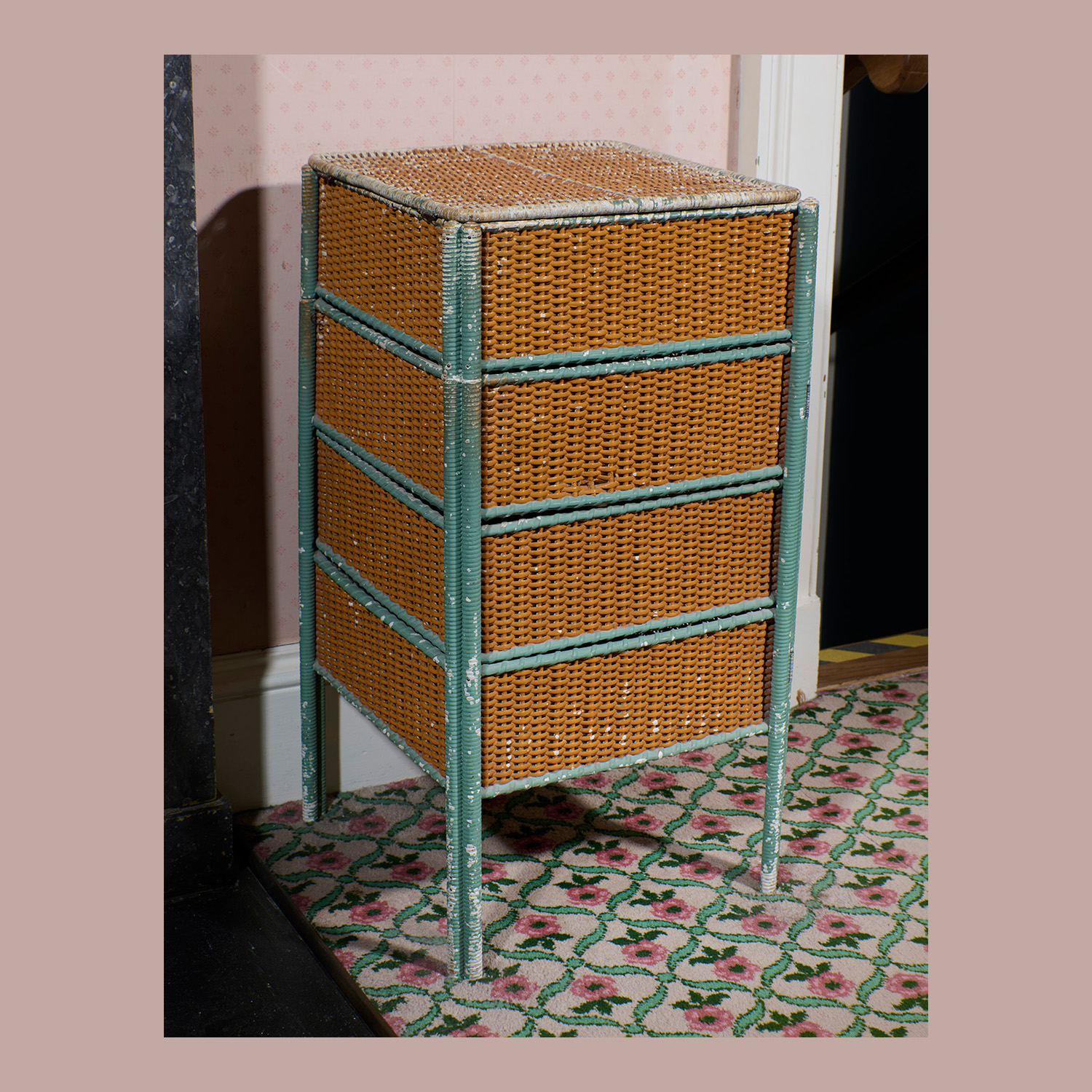
Lloyd loom-style four-drawer unit. Painted orange with greenish blue trims. It forms part of a matching set with the low wardrobe on far side of fireplace.
Probably dates to 1920s.
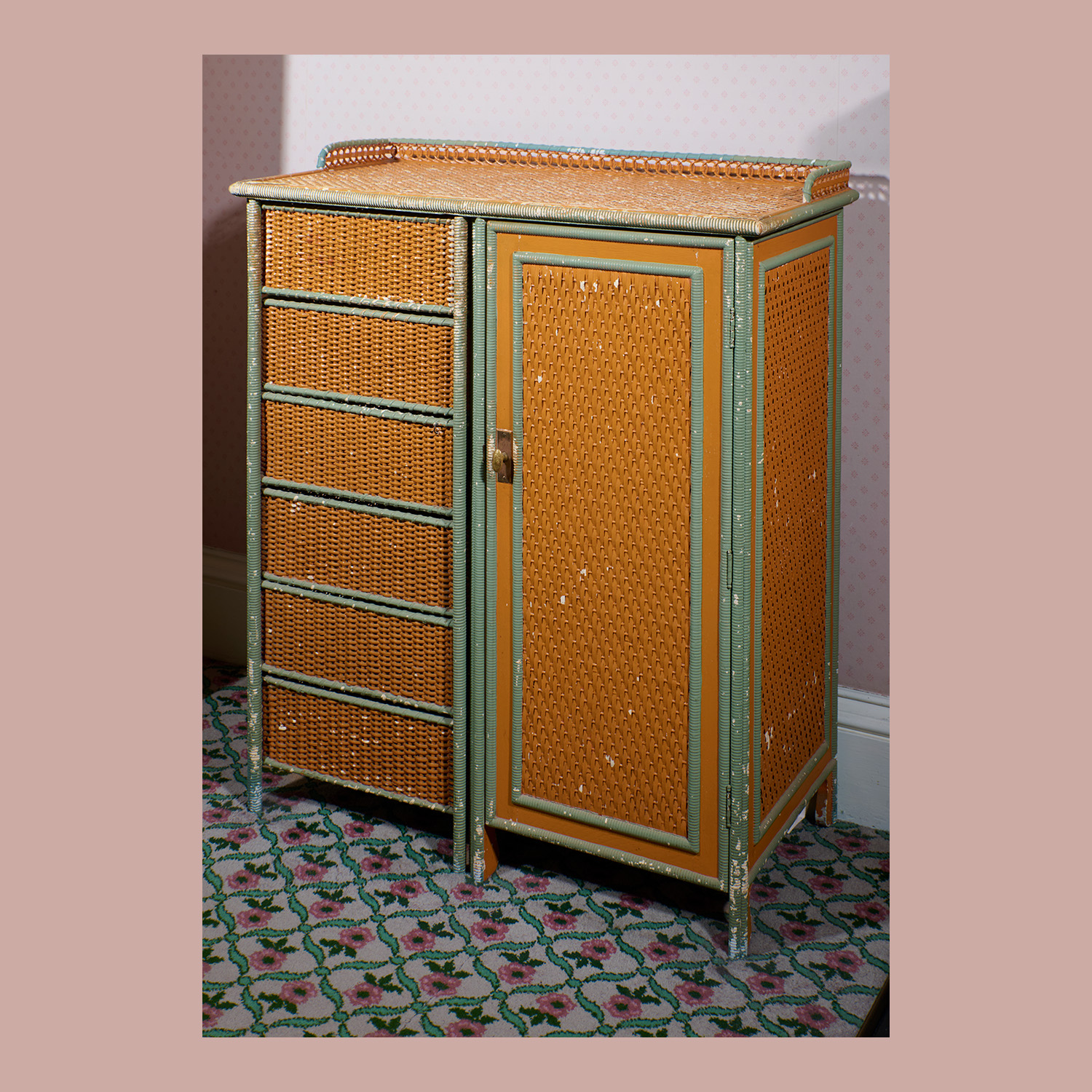
Lloyd loom-style, single door low wardrobe, with six drawers. Painted orange with greenish blue trims. It forms part of a matching set with the four-drawer unit on far side of fireplace.
Probably dates to 1920s.
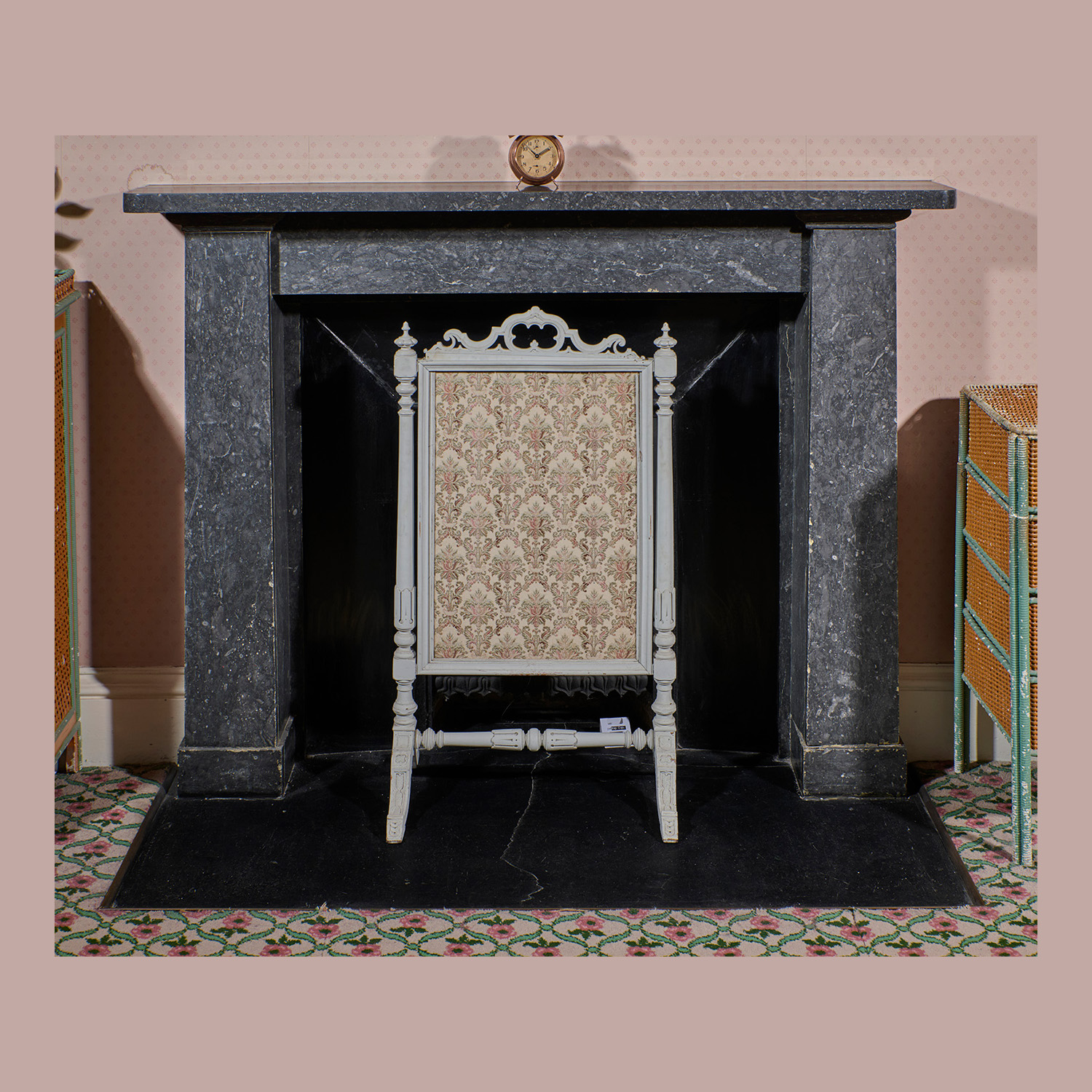
This fire screen is of walnut, which has been painted white.
The fire-surround is of polished limestone.

Artist: After Sir Edwin Landseer, a British artist well known for his painting of animals. He was born in London in 1873 and was a favourite of both Queen Victoria and writer Charles Dickens.
Engraving
c. 66 x 113 cm
Framed: c. 79.5 x 117.5

Arthur Rose Vincent of Clonlara, Co. Clare, married Maud Bowers Bourn in 1910. Her parents, William Bowers Bourn and his wife Agnes Moody, purchase the Muckross Estate as a wedding present for the young couple. A portrait of Maud and Arthur’s grandson, Lord Burgh (Peter Alexander Leith), hangs on wall to the left.
Artist: Leo Whelan.
Oil on Canvas
c. 102.5 x 87 cm
Framed: c. 121 x 105.5 cm